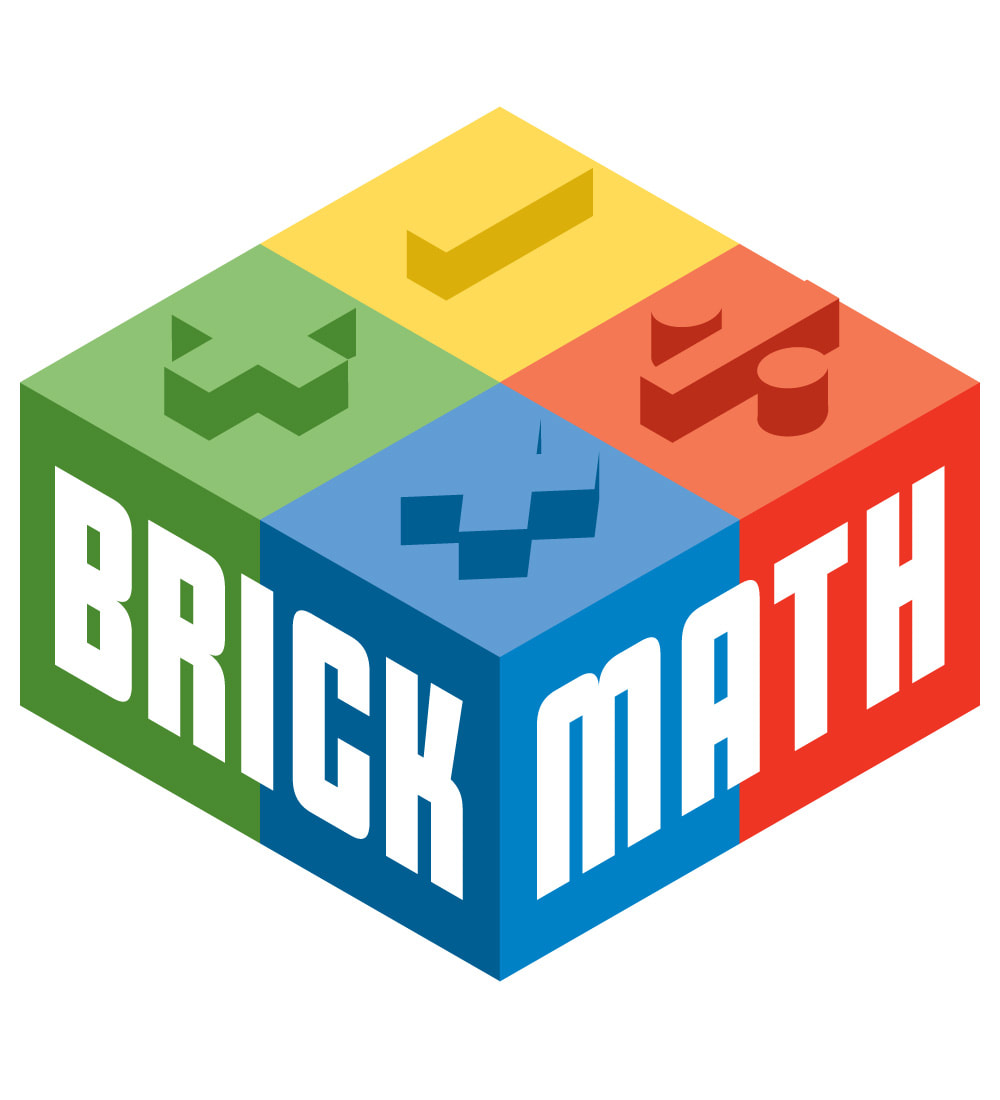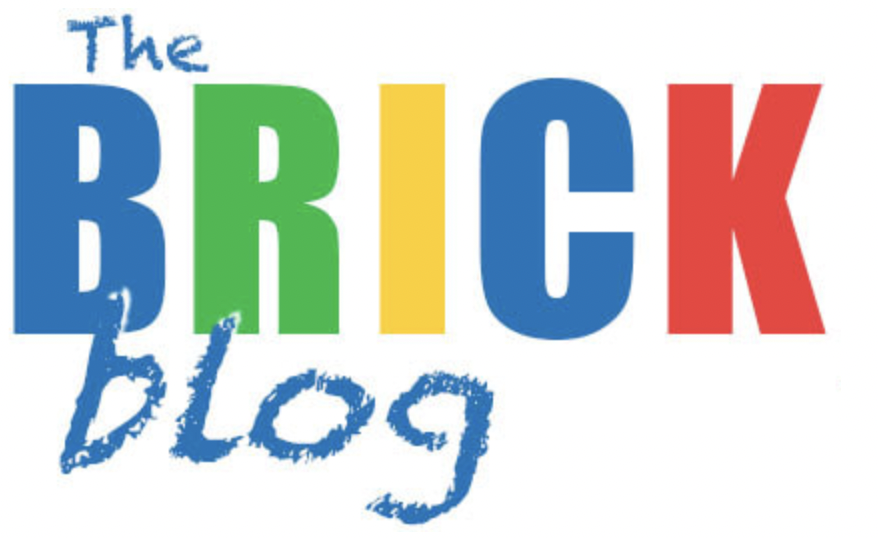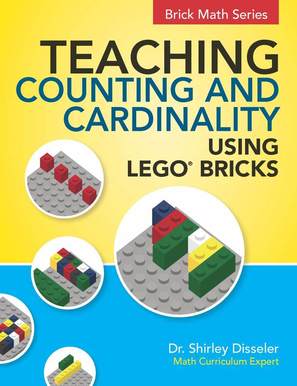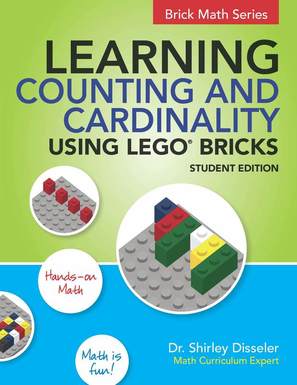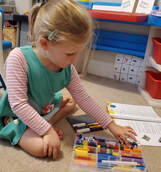 The June 2023 Brick Math Lesson of the Month shows how to teach early learners the very basics of understanding square numbers. It's part of the Counting and Cardinality Using LEGO® Bricks curriculum. To get the June 2023 Brick Math Lesson of the Month, "Square Number Concepts," plus a new lesson each month, click here. Each Lesson of the Month includes the Teacher Lesson Guide as well as the Student Workbook pages that correspond to the lesson. 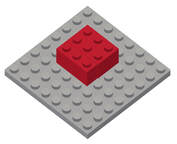 In the lesson, students build 2-stud, 4-stud, and 9-stud configurations with bricks. They are encouraged to see that 4-stud and 9-studs can be modeled in the shape of a square, and that there are 2 and 3 studs on each side of the square. In this way, the concept of square numbers is introduced, and will be returned to later when students learn multiplication. 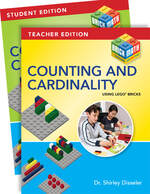 The importance of building skills in math over time can't be stressed enough. This lesson is a great example of how to start from the earliest years, using mathematical terminology to teach concepts young students can grasp. Incorporating bricks to make the lesson visual helps students build math knowledge that will last a lifetime. Brick Math is a K-6 math curriculum that uses LEGO® bricks to model 11 different math subjects: Counting, Addition, Subtraction, Multiplication, Division, Basic Fractions, Basic Measurement, Fraction Multiplication, Fraction Division, Advanced Measurement and Geometry, and Decimals. 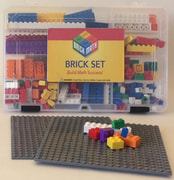 This year, the program will expand to include grades 6 - 8, with the additional subjects Data and Statistics, Pre-Algebra, and Ratios and Proportions. Brick Math works in many applications: for homeschooling, math intervention, enrichment, and as a whole-school program. Materials are simple and affordable. If you are a math teacher or a parent with a student at home who is learning K-8th grade math, check brickmath.com. The website includes videos for both teacher training and direct instruction of students. You can learn more about how Brick Math improves students' math test scores and hear what people who are using Brick Math have to say about the program.
0 Comments
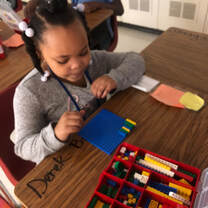 The first step in learning math is learning to count. But there’s more to counting than just reciting a string of numbers in order—lots more. You want your students to develop a solid base of fluency with numbers. They do this by learn to count on, count back, skip-count, and use one-to-one correspondence. Modeling math with manipulatives gets early learners off on the right foot. Brick Math uses LEGO® bricks as the manipulative to help your students visualize the math, so it’s fun to learn! In Counting and Cardinality Using LEGO® Bricks, the hands-on activities using LEGO® bricks help students learn: • pattern recognition • skip-counting • jump numbers • concepts of more than and less than • one-to-one correspondence Brick Math helps students learn counting and cardinality through its integrated program. The teacher leads students through step-by-step lesson plans. Using the bricks, students create models of the math as they learn. They then draw the models they’ve created and explain how the models work. These different ways of interacting with the bricks lead to a deep understanding of counting and cardinality. Using LEGO® bricks to model math adds creativity into the process of learning math. Brick Math gives students the opportunity to create multiple solutions for problems instead of looking for only one right answer. Click here to see several videos of lessons from Counting and Cardinality Using LEGO® Bricks—Teacher Edition. Using LEGO® bricks to learn math with Brick Math is fun—for the teacher AND the students! Click here for a preview of a lesson from Counting and Cardinality Using LEGO® Bricks—Teacher Edition. 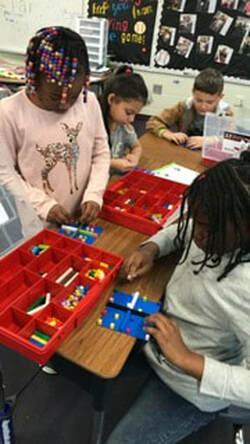 A new mixed-method study shows significant gains in test scores for math content in grades K - 2 after instruction using Brick Math. The findings from a new study of 500 students in kindergarten, first grade, and second grade shows that 320 of the 500 students, or 64 percent, made pre-to-post assessment gains of 4 or more points on a 10-point scale. Each student was given ten problems to complete, in writing or orally, in the areas of counting and cardinality, addition, or subtraction prior to being taught with the Brick Math methods. The same problems were then used with the Brick Math program. Before starting Brick Math, students were asked questions about why they responded in certain ways to the problems to help the researcher identify misconceptions held by students about number sense and computational understanding. Once the problems were completed using the Brick Math methods, the problems were again scored on a scale of 1 - 10 (correct versus incorrect). Students were then asked to discuss the meaning of the models with the researcher. Students were also encouraged to ask questions for clarity during the teaching process. The discussion of the models yielded some important information about how students learn and understand math. Students in kindergarten made comments such as: “Now I see why 8 is larger than 3,” and "5 is between 3 and 8.” Students learning about place value said, “Counting bricks in the tens and ones place helps me know what number goes in each place.” A student further explained, “Two 1x2 bricks and four 1x1 bricks show that the tens place is 2 and the ones place is 4, and the whole number is 24.” Participants: This study was conducted in public and private school classrooms in New Jersey and North Carolina, in rural, suburban, and urban settings for 150 kindergarten, 200 first grade, and 200 second grade students. Data and Findings: The data was analyzed using a one-way ANOVA from SPSS, which indicates that achievement was statistically significant across all three grade levels and all content materials. A Pearson correlation shows no significance between the performance of girls versus boys. This finding is interesting, in that many believe LEGO® bricks are preferred by boys. In this study, the girls did as well as the boys in achievement when using Brick Math. The variables measured in the study included: focus and body language when using Brick Math, verbal participation and questioning by the student, the degree to which students were able to make conceptual meanings in the models, performance pre to post (before Brick Math instruction and after Brick Math instruction). It was interesting to note that the degree of focus was significant (p = 0.03) upon introduction of the bricks to do the math problems. The findings also suggest that both the level of performance and the degree of perseverance are directly related to the degree to which the student could focus (p < .05) in all correlations of these variables. The median pre- to post-difference in the study across all groups was 4 with a range from 0 – 10. The means are displayed for each grade, pre and post, in Table 1. The spread of the mean shows wide differences before and after the instruction in each of the three grades, with the largest difference found in grade 2. Table 1: Comparison of Means Pre-to-Post by Grade Level Grade N Means Pre Post K 150 3.3600 7.2667 1 150 4.0467 7.6133 2 200 3.6050 8.0300 Discussion: The modeling of math offers students a way to connect, but when LEGO® bricks are introduced as the medium for learning content, students become enthusiastic, focused, and engaged, which leads to motivation and time on task. Education experts agree that motivation and engagement are the two key elements in getting students to learn. This study is part of a larger study being conducted to emphasize the value of Brick Math in elementary and middle school math classrooms. This study, which utilized Brick Math as both a guided math and whole class lesson, points to positive learning gains for children in the early years of elementary math. Setting the stage for more sophisticated math content, getting students to understand the “why” behind the basics of math is a key component necessary in early stages of math learning. If students can build a model of the problem and solution, and explain verbally or in writing the “why” behind the math, the likelihood of future success in both their opinions about math and their ability to persevere in dealing with more difficult math will be greatly enhanced. The fourth book in the Brick Math Series has just been published: Teaching Counting and Cardinality Using LEGO® Bricks, plus its companion Student Edition, Learning Counting and Cardinality Using LEGO® Bricks!
Congratulations to author Shirley Disseler for bringing the series to the K - 2 crowd. It's such a natural to teach the concepts of counting and cardinal numbers using the well-known LEGO® bricks. Young students practice one-to-one correspondence by touching the studs on the bricks and compare "more than" and "less than" by building brick models. The hands-on learning with the bricks, together with Dr. Disseler's step-by-step approach, creates a teaching and learning resource that introduces students to the first mathematical concepts. Next up will be Addition and Subtraction Teaching and Learning books to complete the K - 2 math curriculum, available in June! |
Categories
All
Archives
July 2024
|

